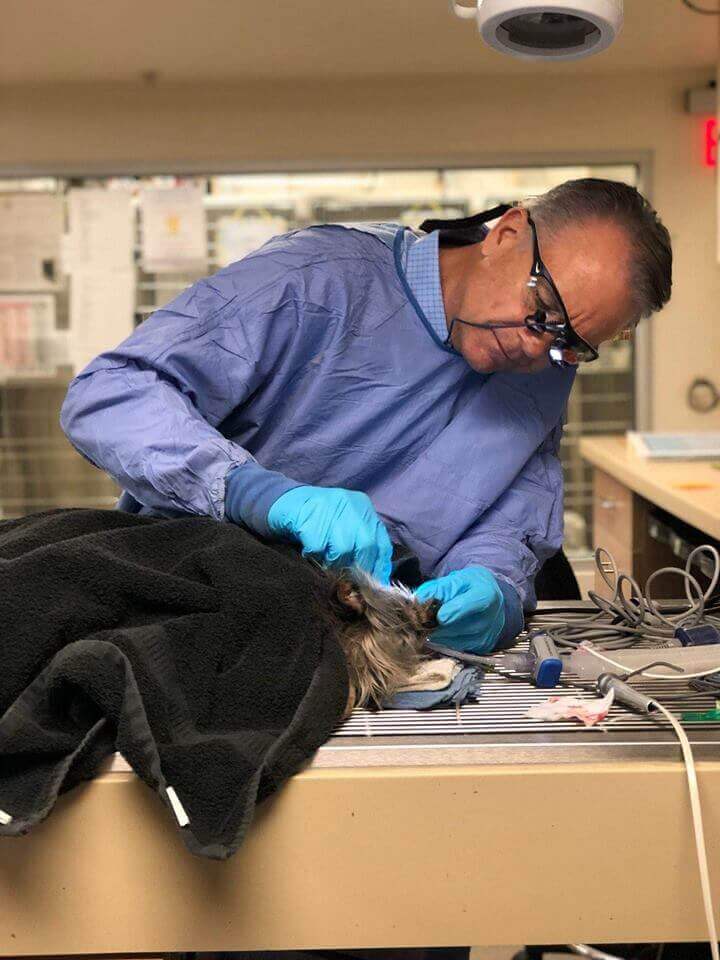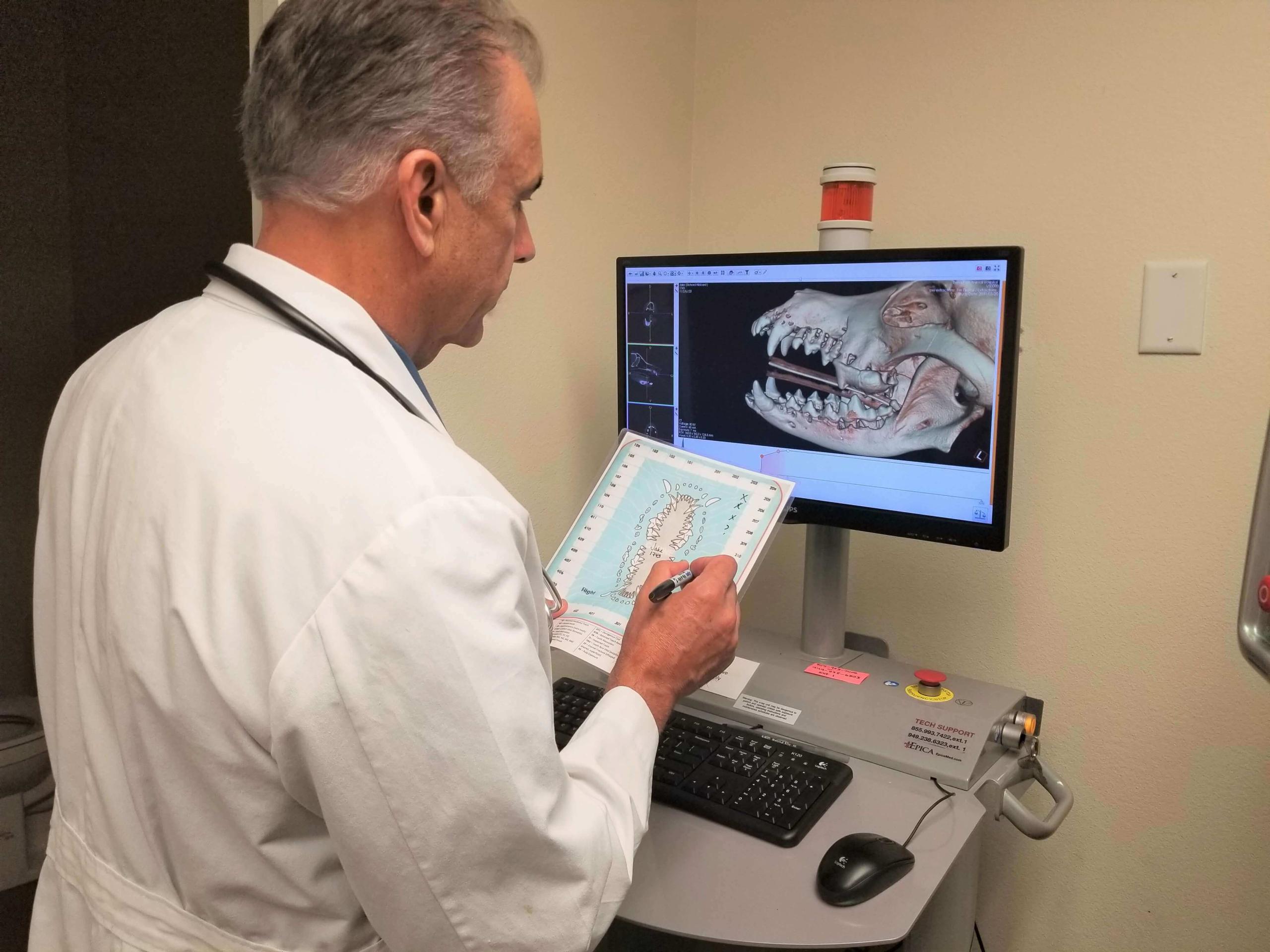As a dog owner, you may have noticed that your pet has a case of unpleasant “doggy breath,” tooth discoloration, or worse. Whether you have a brand-new puppy or an older dog, the fact that you are taking time to research good oral health for your canine companion is a great start! Here at Boca Park Animal Hospital, we work hard to make the accurate information you need as accessible as possible. That’s why we’ve taken the time to answer some of the most frequently asked questions about dog dental care.
If your pet needs a compassionate and highly trained veterinarian for dog dental cleaning and care in Las Vegas, NV, we would love to help! The first step is scheduling an appointment for an exam, so give us a call today at (702) 675-7000.
How does dental health impact the overall health of my dog?
 Dental health plays a significant role in your dog’s overall health. While you probably brush your teeth twice per day and see a dentist annually, dog teeth cleaning is less likely to be part of your daily routine. Many caring pet parents don’t take their dogs to see a dog dentist every year. If you think about what condition your teeth and gums would be in if you didn’t brush and see a dentist regularly, it’s easy to understand why dental care is critical for pets!
Dental health plays a significant role in your dog’s overall health. While you probably brush your teeth twice per day and see a dentist annually, dog teeth cleaning is less likely to be part of your daily routine. Many caring pet parents don’t take their dogs to see a dog dentist every year. If you think about what condition your teeth and gums would be in if you didn’t brush and see a dentist regularly, it’s easy to understand why dental care is critical for pets!
Dogs cannot speak for themselves, so it’s up to us to prevent or treat problems that could cause oral pain or discomfort. Oral infections cause dental disease, and when left untreated, those infections can spread throughout the body via the bloodstream. Infections originating in the mouth can affect the heart, kidneys, and liver and cause severe health complications. In addition to being painful and affecting your dog’s quality of life, poor dental health can also impact their longevity.
How can I care for my dog's teeth at home?
Without a doubt, daily brushing is the best way to care for your dog’s teeth at home. It only takes 24 hours for plaque to harden into tartar, so brushing is only truly effective when done every day. The abrasive action of a toothbrush removes plaque and keeps your dog’s mouth clean. When brushing at home, toothpaste specifically formulated for pets is essential. In addition to coming in flavors that appeal to dogs — like chicken, beef, and seafood — pet-specific toothpaste does not contain fluoride and is safe if swallowed. Many brands of human toothpaste contain xylitol, which is highly toxic to dogs. Your veterinarian is an excellent resource for learning how to clean your dog’s teeth.
While they are not a substitute for daily brushing, there are also dog dental chews to help keep their teeth clean and to fix bad dog breath. Look for products with the Veterinary Oral Health Council (VOHC) seal, which shows that a product has been proven to work as the packaging claims. Dental wash for dogs and water additives may help freshen your dog’s breath, but they alone do not do enough to clean their teeth or improve overall oral health.
What are some signs and symptoms of dental disease?
Bad breath is typically the first and most common sign of dental disease. Dental disease is likely to be to blame if you notice an unpleasant odor when your dog is panting nearby. Contact a veterinarian right away if your dog has bad breath.
As dental disease in dogs progresses, you may notice food falling out of your pet’s mouth when eating. Known as “food shifting,” this occurs when an animal chews on only one side of the mouth due to pain.
Dogs suffering from dental disease may also exhibit the following symptoms:
- They’ve become reluctant to eat.
- They’re more irritable than usual.
- Excessive drooling
- Hiding
- Behavioral changes
As always, any significant change in your dog’s behavior warrants at least a phone call to us at (702) 675-7000.
What are some of the common dental diseases in dogs?
Gingivitis is the most common form of dental disease in dogs. It is caused by excessive plaque on the teeth and leads to swollen, inflamed gums. Gingivitis causes pain and discomfort and can cause bleeding from the mouth when a dog chews on something hard.
As it progresses, gingivitis leads to periodontal disease in dogs. This type of disease lies below the gum line, along the tooth's root, including the bone. In time, periodontal disease in dogs can cause bone loss and abscesses, putting them at risk for systemic infections.
Sometimes, pets develop tumors and other growths in their mouths or on their tongues. Though often benign, abnormal oral growths could be related to certain types of cancer. As a result, they should be evaluated by a veterinarian right away.
Unlike humans, dogs are not prone to cavities. They can get them, but it is rare due to the shape of their teeth. Plus, unlike humans, dogs aren’t prone to consume excessive amounts of soda or candy.
Why is early detection and diagnosis of dental disease in dogs so important?
 Dogs need their teeth, but when they are severely diseased, they may need to be removed. With early diagnosis and treatment, though, it is often possible to stop the progression of dental disease before reaching that point. Preventative care helps your pet avoid the need for antibiotics, tooth extractions, and other invasive procedures.
Dogs need their teeth, but when they are severely diseased, they may need to be removed. With early diagnosis and treatment, though, it is often possible to stop the progression of dental disease before reaching that point. Preventative care helps your pet avoid the need for antibiotics, tooth extractions, and other invasive procedures.
How often should a dog's teeth be checked?
Your dog’s teeth should be checked by a veterinarian annually at the absolute minimum, and ideally twice per year. This provides an opportunity for their veterinarian to spot broken teeth, early signs of dental disease, and other issues. After the exam, your veterinarian may recommend a dental cleaning, a new form of preventative care, different types of dog dental chews, a new dog dental toy, or even a prescription diet made to help dogs with dental problems.
What does a professional dog dental cleaning involve?
Professional dog dental cleanings are similar to those for humans in some ways and vastly different in others. However, the most significant difference is that dog dental cleaning is performed while the patient is under general anesthesia.
Before the cleaning, we examine the dog and perform lab work to ensure that they are healthy enough to undergo the procedure. Once they are under anesthesia, we place a breathing tube to ensure they do not inhale any harmful bacteria. The veterinarian carefully probes around the teeth and looks for pockets and broken teeth. We typically take x-rays and clean the teeth using an ultrasonic cleaner. The teeth are polished, too, to ensure there are no defects in which bacteria can get stuck. If any teeth need to be extracted, this is done while the patient is under anesthesia.
If you still have questions about your dog’s dental care needs, please don’t hesitate to reach out to us. Give us a call at (702) 675-7000.

